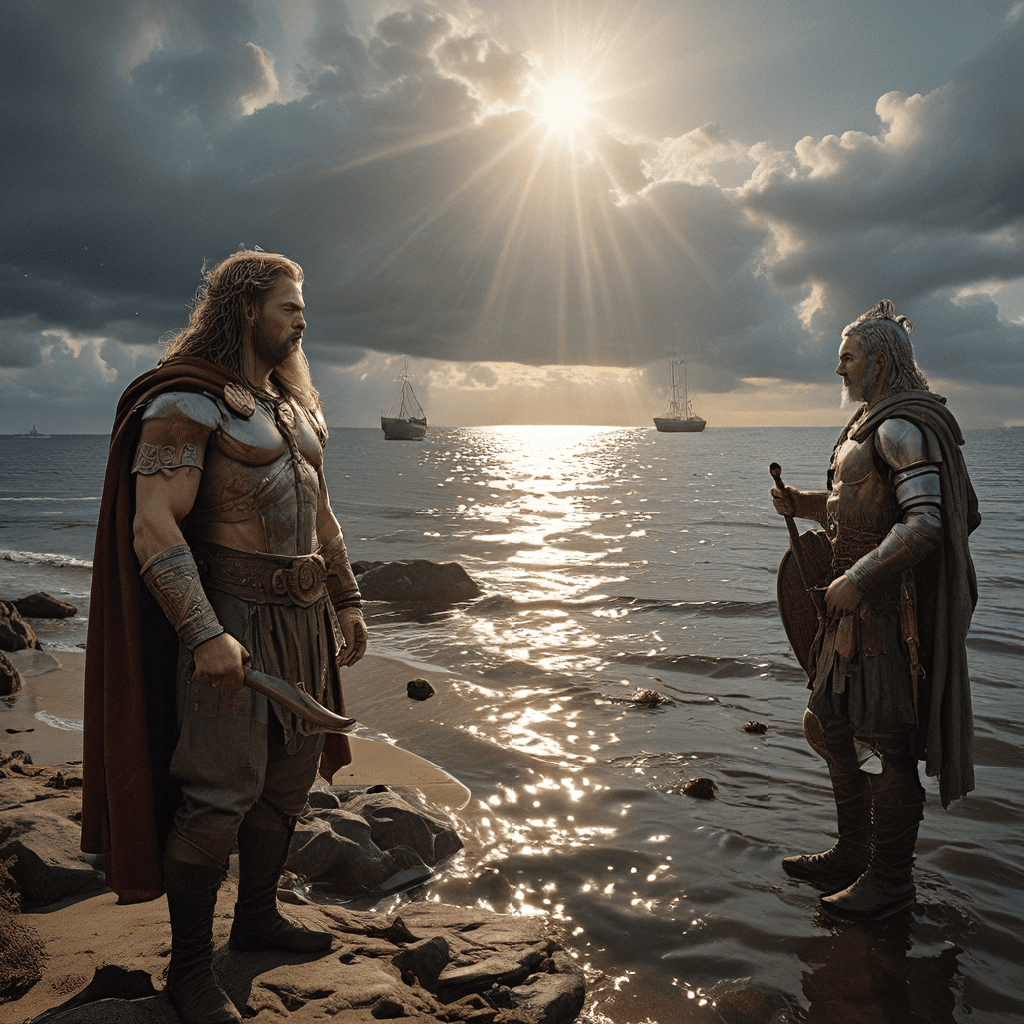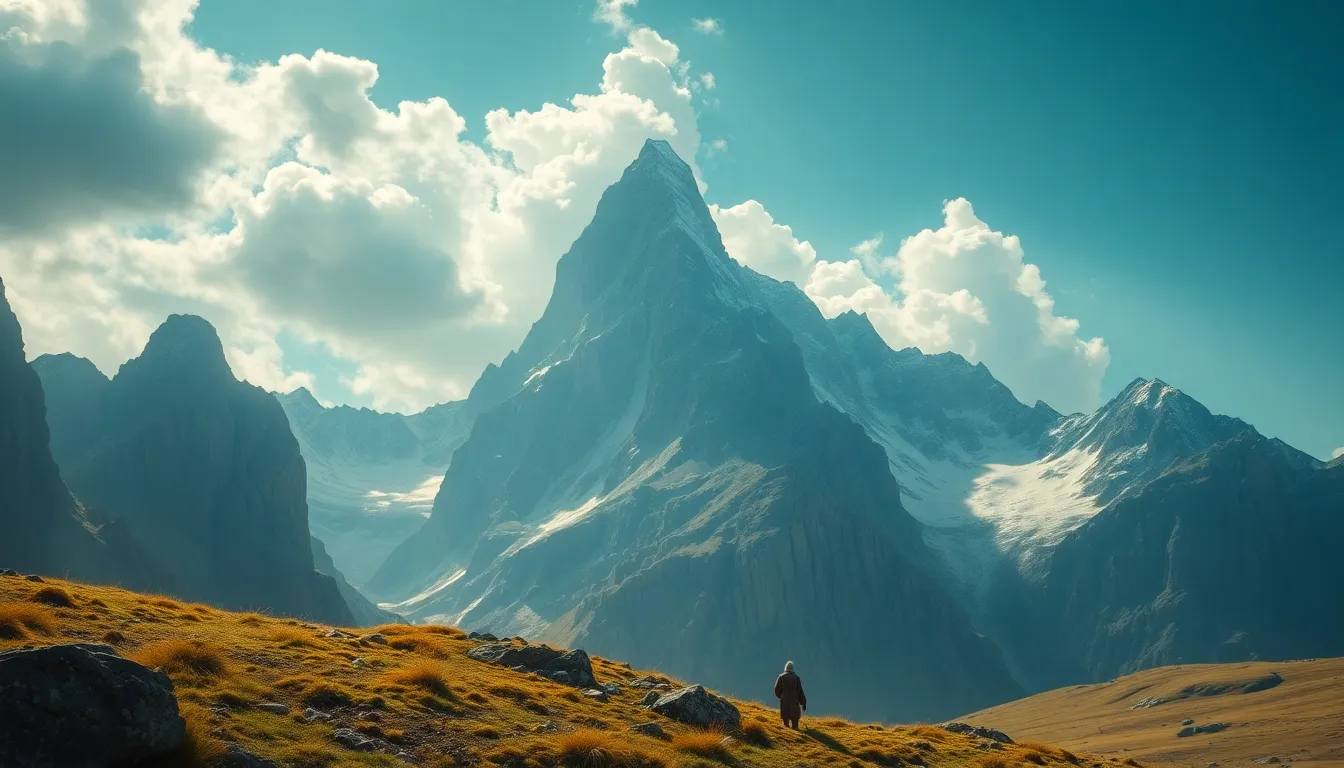Baltic Mythology: A Tapestry of Myth and Legend
Baltic mythology, a rich tapestry woven from ancient beliefs and folklore, offers a captivating glimpse into the world of the Baltic peoples. For centuries, these stories have been passed down through generations, shaping their understanding of the world around them. Rooted in nature and the forces of the universe, Baltic mythology explores themes of creation, destruction, love, loss, and the eternal cycle of life and death.
The Balts: A People Shaped by Nature and Folklore
The Baltic people, inhabiting the region encompassing modern-day Lithuania, Latvia, and parts of neighboring countries, have a long and fascinating history. Their mythology, deeply intertwined with their lives, reflects their close relationship with the natural world. From the vast forests that covered their lands to the turbulent seas that bordered them, the Balts found inspiration and meaning in every aspect of their environment.
Their oral traditions, passed down through generations by bards and storytellers, are filled with tales of gods and goddesses, mythical creatures, heroes, and villains. These stories not only entertained but also served as a means of transmitting knowledge, values, and cultural identity.
The Pantheon of the Balts: Gods and Goddesses of the Forest and Sea
The Baltic pantheon is populated by a diverse cast of deities, each representing a different aspect of nature or human life. The supreme god, Dievas, embodies the heavens and the forces of creation. Perkunas, the god of thunder and lightning, wields vast power and is often depicted as a warrior wielding a hammer.
The goddess of the hearth and home, Laima, is responsible for the fate of newborns. And the trickster god, Velnias, represents the unpredictable and often mischievous forces of the world. Many other gods and goddesses, each with their own specific domains and roles, make up the intricate web of Baltic mythology.
Heroes of the Baltic Mythos: Champions of the People
Alongside the gods and goddesses, Baltic mythology features a cast of heroes who embody courage, strength, and cunning. These figures, often descended from gods or mortals blessed with supernatural abilities, represent the ideals of their people. They fight against evil, protect the innocent, and defend their homeland from threats.
These heroes often face trials and tribulations, engaging in epic battles with mythical creatures and formidable foes. Their triumphs and struggles serve as lessons for audiences, teaching them about bravery, resilience, and the importance of upholding moral values.
Perkunas: The Thunderer, God of Justice and Power
Perkunas, the most powerful god in the Baltic pantheon, is associated with thunder, lightning, and storms. He is depicted as a formidable warrior wielding a hammer or axe, symbolizing his immense power. He is often seen as the protector of the righteous and the punisher of the wicked.
Perkunas is responsible for maintaining justice and order in the world. He is believed to judge the actions of humans, rewarding the virtuous and punishing the wicked. His presence is felt during thunderstorms, when his anger and power are unleashed upon the world.
The Moral Dichotomy: Heroes and Villains in Baltic Mythology
Baltic mythology, like many other mythologies, is not simply a collection of fantastical tales. It offers a nuanced view of good and evil, morality, and the balance of forces in the universe. Just as the world contains both light and darkness, Baltic mythology features both heroes and villains, each playing a crucial role in the cosmic order.
Heroes embody the ideals of the Baltic people. They are brave, strong, and cunning, often possessing supernatural abilities. They fight for justice, protect the innocent, and defend their homeland from threats. These heroes, like the brave warrior Vytis, often face trials and tribulations, engaging in epic battles with mythical creatures and formidable foes. Their triumphs and struggles serve as lessons for audiences, teaching them about bravery, resilience, and the importance of upholding moral values.
Villains, however, represent the forces that threaten the balance of the world. They are often associated with darkness, chaos, and destruction. These villains are often depicted as powerful creatures, like the monstrous Laumė, or deceitful tricksters, like the mischievous Velnias, aiming to disrupt the natural order and cause harm to humans. Their presence serves as a reminder of the constant struggle between good and evil.
The Role of Villains: Balancing the Cosmic Order
While villains may seem purely evil, they play a crucial role in maintaining the balance of the universe in Baltic mythology. Their actions, often driven by greed, revenge, or a desire for power, create conflict and challenge the heroes. This conflict forces the heroes to grow, develop their skills, and demonstrate their courage and determination.
Furthermore, the presence of villains highlights the importance of moral choices. They remind us that even the most righteous heroes must constantly strive to resist temptation and uphold their values, demonstrating that good triumphs over evil, but only through constant vigilance and effort.
The Moral Compass of the Balts: Insights from Their Mythology
Baltic mythology offers a complex and insightful view of morality. It emphasizes the need for balance, justice, and courage. Through the stories of heroes and villains, the Balts learned about the consequences of their actions, the importance of upholding justice, and the need to constantly strive for good.
The mythology emphasizes the importance of community, family, and the protection of one's homeland. It teaches us to respect nature and to value the wisdom of our ancestors. These lessons, passed down through generations, have shaped the Baltic people's values and traditions, influencing their culture and society to this day.
The Enduring Legacy of Baltic Mythology: From Ancient Tales to Modern Interpretations
Baltic mythology, though passed down orally for centuries, continues to inspire and resonate with people today. It is a rich source of inspiration for artists, writers, and musicians, influencing their creative endeavors.
The enduring themes of bravery, justice, and the balance of forces continue to hold relevance for modern audiences. The stories of heroes and villains serve as reminders of the eternal struggle between good and evil, and the importance of making moral choices.
While the specific details of Baltic mythology may differ from other mythologies, the underlying themes and values remain universal. The stories remind us of the human need for meaning, the desire for justice, and the eternal quest for balance in the world.
FAQ
Q: What is Baltic mythology?
Baltic mythology is a collection of ancient beliefs, stories, and folklore passed down through generations of Baltic people. It is heavily influenced by nature and the forces of the universe.
Q: What are some key figures in Baltic mythology?
Some key figures include Dievas (the supreme god), Perkunas (god of thunder and lightning), Laima (goddess of fate), Velnias (the trickster god), and a variety of heroes like Vytis, a brave warrior.
Q: What is the role of villains in Baltic mythology?
Villains are essential for maintaining balance. They represent chaos and threaten the heroes, forcing them to grow and prove their worth. They also serve as a reminder of the need to make moral choices.
Q: What are some themes explored in Baltic mythology?
Significant themes include the balance of forces, justice, courage, the importance of family and community, and respect for nature.
Q: What is the importance of Baltic mythology today?
Baltic mythology still inspires artists and writers and offers valuable lessons about human nature, morality, and the quest for balance in the world.


